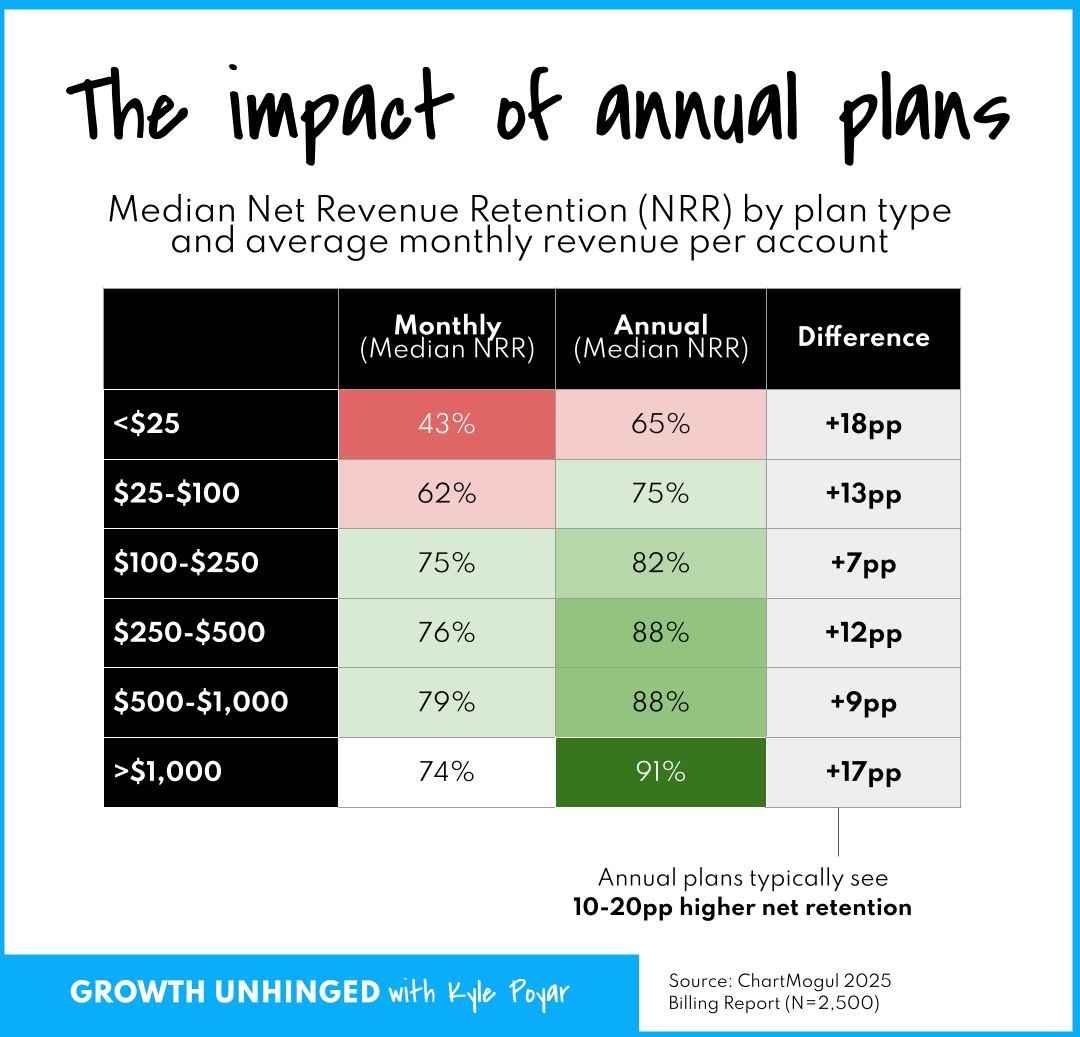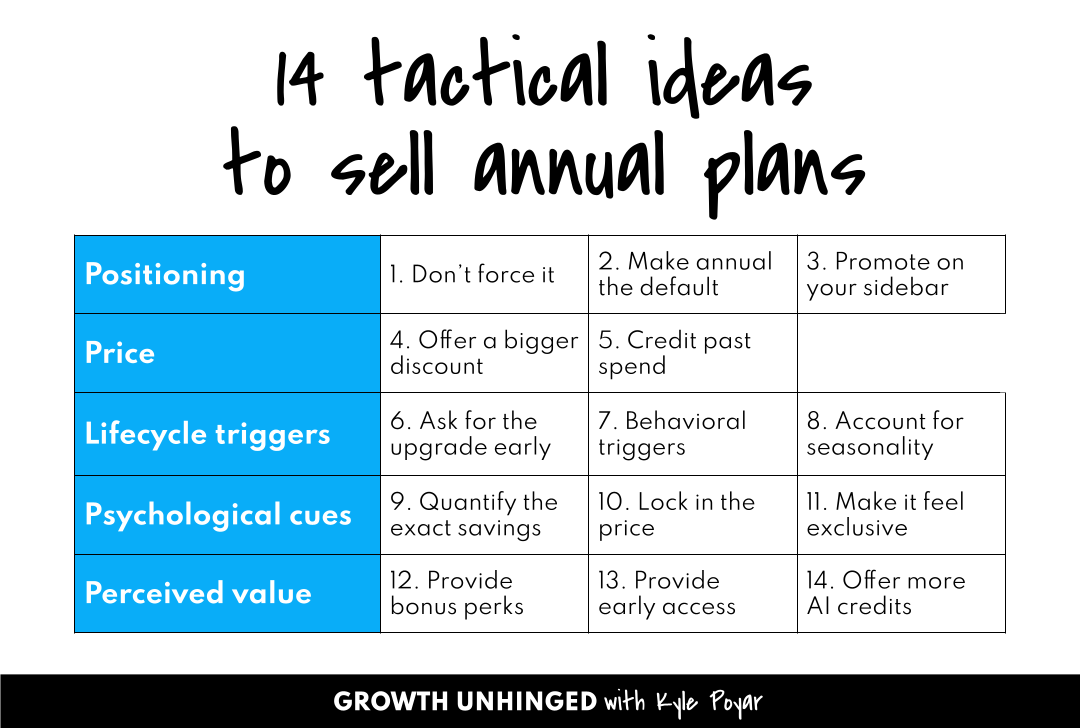How to sell more annual plans
14 tactical ideas via top growth leaders at Canva, Grammarly, Pleo and more
There’s a growing tourism threat — and, no, I’m not just talking about Barcelona in the summer. I’m talking about the rise of AI tourists.
A flashy AI demo can go viral, and even translate into real revenue, then quickly turn into a churn nightmare. New AI products often coincide with greater volatility in both usage and spend. More project-based, non-recurring use cases. Experimental revenue that’s not in production. And even three month opt-out clauses where 70-80% opt-out.
I’ve published before about the surprising UX patterns that help power repeat usage and sustainable growth. Today, I’m tackling another way to motivate customers to stick around: selling more annual plans.
The impact of annual plans on retention is real. When the team at ChartMogul investigated billing practices at 2,500+ SaaS companies, they found median net revenue retention (NRR) is 10 to 20 percentage points higher for annual plans compared to monthly ones.
Since folks have already invested their money, they’re more likely to invest sweat equity into learning and using the product. And having a full year before the renewal affords a grace period in the event there are any hiccups, hallucinations, support issues or product gaps. (Annual plans also bring in cash upfront, helping to quickly recoup customer acquisition costs.)
I’m sharing 14 of the best ideas for increasing annual plan adoption within your customer base. The advice comes from my personal experience along with polling some of the smartest product and growth leaders from Canva, Duolingo, Grammarly, Pleo, Unbounce, WaveHQ and more.
Special thank you to the following growth leaders for sharing your ideas: Albert Cheng (chief growth officer at Chess.com), Amaan Nathoo (fractional VP of growth), Haresh Bajaj (SVP of product growth at Pleo), Hila Qu (growth advisor), Naman Gupta (head of monetisation and self-serve revenue at Canva), Partho Ghosh (VP of product at Uberall), Rajan Sheth (GP at HyperGrowth Partners), Tom Orbach (Marketing Ideas) and Vivek Balasubramanian (VP of product growth at Roofr).
Lever 1: Positioning
Keep reading with a 7-day free trial
Subscribe to Kyle Poyar’s Growth Unhinged to keep reading this post and get 7 days of free access to the full post archives.




